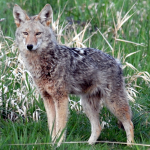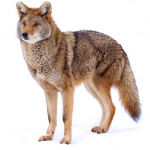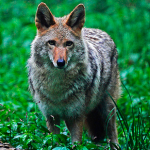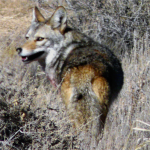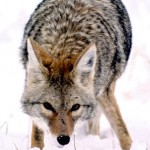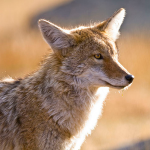Coyotes have existed at ‘Souls since early in the game’s history, first becoming popular with the Coyote Invasion in 2002. Since the foundation of Inferni, a coyote-exclusive group, they have always had representation at ‘Souls. More recently, coyotes have also been welcomed into other packs.
The predominant subspecies of wolf found at ‘Souls is the Northeastern Coyote, as this subspecies is native to the area.
Characteristics
Comparison to Wolves
Coyotes have been described as small wolves; however, there are a few key differences. Coyotes have shorter, more tapered snouts and much larger ears than the typical wolf. Coyotes also hold their tails differently; while a wolf is more likely to keep its tail held parallel to its spine, a coyote is more likely to allow its tail to droop and hang perpendicular to the spine. They are comparable to medium-sized dogs in stature.
Size
Coyotes generally reach a shoulder height of 23-28 in (58-70 cm) and weigh 20-50 lbs (10-22 kg).
Generally, northern coyotes are larger than southern coyotes, and eastern coyotes are larger than western coyotes. Although the typical size for a desert-born coyote can range from 20-35 lb (9-18 kg), 75 lb (34 kg) specimens have been known to exist.
Appearance
Desert coyotes are light gray or tan with a black tip on the tail. Coyotes from areas of high elevation have fur that is darker, thicker and longer; the under parts are nearly white, and some have a white tip on the tail. In winter, the coats of mountain coyotes become long and silky. Coyotes may be grey, buffy, reddish-brown colors, generally with more tawny, reddish, buff, and blondish colors than the gray wolf.
Culture and Lifestyle
Although the coyote is often thought to be more solitary than the wolf, there are many instances of pack behavior among coyotes. They form complex social structures like their larger cousins with clear hierarchy and an “alpha pair.” Coyotes which live in northern and western areas of their range display more developed and complex social systems than coyotes found in the southern and eastern areas of their range. Interestingly, far more coyotes live in packs — approximately 70% as measured by humanity — than coyotes that live as mated pairs or loners.
Perhaps more than any other creature, coyotes are opportunists. Aside from the raccoon, it is the only creature in North America to have greatly expanded its range, benefiting from human occupation. Humans helped eradicate wolf populations in the contiguous United States, which allowed coyote populations to explode. There are only two North American biomes that do not serve as coyote habitat: the far northern tundra and the humid southeastern forests (e.g., the Everglades).
As the only wild canine species with significant habitat before the apocalypse, coyotes were doing quite well in 1988. With the collapse of humanity, however, Wolves and Dogs began to encroach on Coyote territory, usually driving them back. This has led to some amount of friction between the species, especially between Coyotes and Wolves.
Subspecies
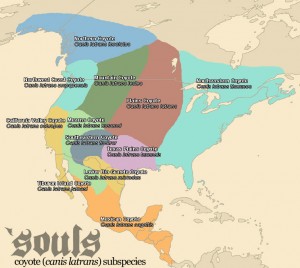
- C. l. thamnos: Northeastern Coyote (native to ‘Souls)
- C. l. latrans: Plains Coyote (nominate subspecies)
- C. l. ochropus: California Valley Coyote
- C. l. microdon: Lower Rio Grande Coyote
- C. l. mearnsi: Mearns Coyote
- C. l. cagottis: Mexican Coyote
- C. l. frustror: Southeastern Coyote
- C. l. lestes: Mountain Coyote
- C. l. incolatus: Northern Coyote
- C. l. umpquensis: Northwest Coast Coyote
- C. l. texensis: Texas Plains Coyote
- C. l. jamesi: Tiburon Island Coyote
